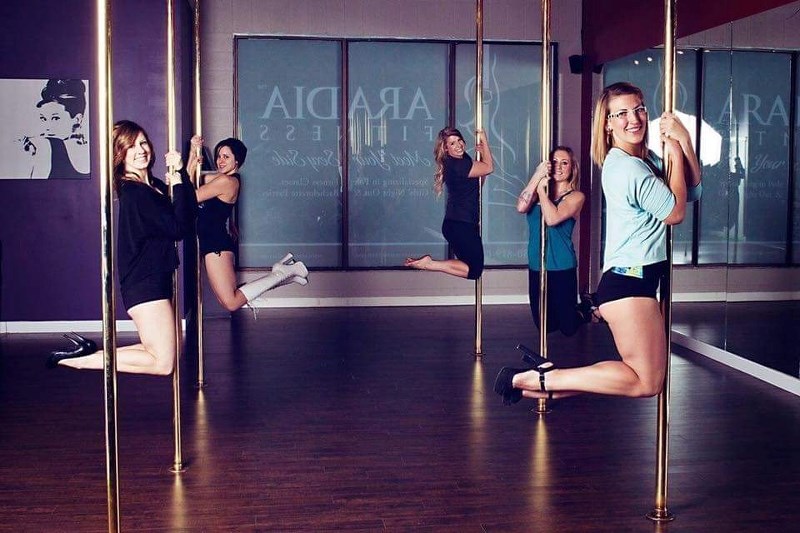When I told my parents I had signed up for a pole dancing class, my dad didn’t say much of anything and my mom politely suggested I give jogging another try.
Pole dancing is possibly the only exercise class people consider attending surreptitiously. But as pole dancing studios pop up in both bigger cities and smaller towns, the secret is getting out – pole dancing is a great workout.
Aradia Fitness, a franchise of pole fitness studios with locations across North America, recently opened a St. Albert studio under the ownership of pole-pro Chantelle Beasley. It’s an intimate studio with just under a dozen brass poles, a fierce sound system and the option to dim the lights to a soft glow.
Like trying anything for the first time, my initial session at Aradia was intimidating. While for most new pursuits our brains merely pulse with the question of ‘can I do this?’ pole adds an extra element: it’s not just ‘can I do this?’ but ‘can I look sexy while I do this?’ ‘Sexy’ being a much more intangible skill. Fortunately, my instructor, Lisa Balzer, has a knack for putting her students at ease.
“For brand new newcomers I want to congratulate them right off the top for taking that initiative to step out of their comfort zone, because it is very, very scary,” says Balzer. “I remember being a student myself and being terrified for my first two classes. But normally when students come to class, they’re all terrified and that becomes a bonding factor.”
Balzer is best described as sexy sunshine. You can tell she’s wildly enthusiastic about the sport, but also skilled, especially when the right dance track is playing. For warm-up before each class, she not only adds the occasional booty smack or hair flip – making even the most standard stretches just a little bit racy – but she also sneaks in elements of strength and flexibility. Those skills will be needed on the pole later on.
“People that come to pole initially think, ‘oh, it’s taboo, it’s sexy, I’m going to get in touch with my sexy side’,” explains Balzer, “and the next thing you know, they’re signing up for trapeze, they’re signing up for circus silks, because the skills and the strength that you build here, transfer so clearly over. So it’s a really nice segue into this kind of foreign, eccentric world of circus.”
Balzer points out that the workout hits the three big fitness concerns: flexibility, strength and cardio. But the physical benefits quickly become secondary to the thrill of learning a new spin or hold.
“[Beginners] are way stronger than they give themselves credit for,” says Balzer. “People think, ‘oh, I could never do that! I would need so much more upper body strength before I ever attempt anything like that.’ But then you get them into class and this is where you develop that strength. This is where you do the conditioning, this is where you learn the moves, learn that engagement and then you get to see yourself grow. “
While strength and flexibility tend to progress with the class, the ‘sexy get-ups’ and booty shakes are a little harder to learn for some, including me.
“You take from the class what you want to take from the class,” assures Balzer. “We always give the option of being sexy, but it’s absolutely not a requirement. If you don’t want to do ‘wandering hands’ then there’s no pressure to, it’s just the option.”
In fact, the genre has expanded far beyond seductive routines into lyrical forms as well, with other dance styles infusing pole with everything from hip-hop to flamenco elements. To give my mom the credit she deserves, after a quick Google search she dropped the idea of me pursuing running again and was supportive of my pole pursuits, having discovered YouTube videos of graceful pole routines with stunning acrobatic feats.
For Balzer, however, it’s all about seeing her students’ develop, both physically and mentally.
“Seeing the confidence grow in my students as they achieve new goals,” she says is her favourite part of teaching. “I’ve never seen another community that’s as supportive, welcoming and open-minded as the pole community.”


